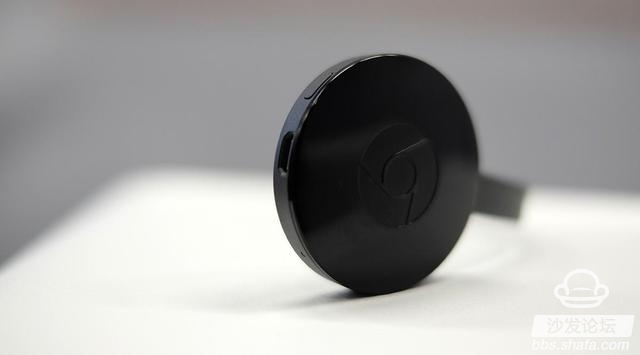
Let's talk about Chromecast first. It is one of the many smart TV sticks on the market. However, unlike competitors, this device does not come with a remote control, and users have to learn to use a mobile phone to control the TV. From past experience, the best way to overcome the strangeness brought about by new technologies is to associate it with home entertainment experiences. The Nintendo Wii's handle is an excellent example. Because the appearance is very similar to the TV remote control, users will not be scared by it. However, Google hopes that people will no longer use dedicated remote controls through the popularity of smart phones and ultra low-cost hardware prices.
The same is true of Chromecast Audio. Google believes that consumers should be more willing to spend 35 dollars to upgrade their existing audio equipment, rather than buying a brand new wireless speaker at 10 times the price. In the same way, smart phones are at the expense of dedicated controllers at the heart of the home entertainment experience. However, taking into account the low price of this device, those who do not want to be so troublesome will only take this step because of Google's signature. Either way, Google is quietly and quietly encouraging users to use their mobile phones to make smart home technology work.
However, a smart TV stick and wireless audio adapter do not allow Google to become the king of the smart home field, this time on the appearance of OnHub. This $200 router promises not only to make bad Wi-Fi signals history, but it also has support for Bluetooth, Weave, and ZigBee. Through future software upgrades, this router can become a true smart home hub.
Google is still working on a simplified version of the Android operating system called Brillo, which will work in a smart home environment. Because Nest can support Nest's development of communication protocol Weave, Nest users should also have no small interest in Brillo. By then, Google may only be able to occupy every device in your home with just one application.
Imagine that Google Now knows when you leave home every day and adjusts the room temperature accordingly. If you turn on the HDMI-CEC feature, your Chromecast will be able to turn on the TV and play your favorite shows when you go home to work overtime. When you sit on the sofa, the interior lighting will automatically darken. Although this situation may sound crazy now, we should be able to see the emergence of a large number of Brillo devices until next year's Nexus conference.
The off-grid inverter is an inverter used in off-grid solar power generation systems. Its main function is to convert the direct current generated by solar panels into alternating current to meet the power demand in off-grid environments, such as in remote areas, In camping, boats, or moving vehicles.
Main effect:
Converts the direct current generated by solar panels into alternating current to supply the power needs of homes, mobile devices, or other electrical appliances.
Off-grid inverters are usually equipped with battery energy storage systems, which store excess power so that they can continue to supply power when the solar panels cannot generate enough power.
Differences from On-Grid Inverter:
Connection method: Off-grid inverter is an inverter used in the off-grid system and does not need to be connected to the grid. They are often used in places where there is no access to the grid, such as remote areas, wild camping, or outlying islands.
Grid requirements: Unlike on-grid inverters, off-grid inverters do not need to meet grid requirements and standards because they are not connected to the grid. They can operate independently and can be adapted to different off-grid environments.
Self-sufficiency: The off-grid inverter is equipped with a battery energy storage system, which can store excess electricity so that it can continue to supply electricity when the solar panels are unable to generate electricity. This makes the off-grid system self-sufficient and not dependent on an external grid for power.
Application scenarios: Off-grid inverters are widely used in remote areas, camping, ships, mobile vehicles, and some special-purpose scenarios. On the other hand, grid-connected inverters are mainly used in home, commercial, and industrial photovoltaic power generation systems connected to the grid.
In general, the main function of the off-grid inverter is to convert the direct current generated by the solar panels into alternating current to meet the power demand in the off-grid environment and achieve self-sufficiency by being equipped with a battery energy storage system. In contrast, on-grid inverters connected to the grid are mainly used to integrate solar power into the grid, realize the interaction between solar power and the grid, and comply with the requirements and standards of the grid.
off grid solar inverter,off grid 3 phase inverter, off grid solar power inverter, off grid solar inverter 5kw, off grid solar inverters for sale
Ningbo Autrends International Trade Co., Ltd. , https://www.china-energystorage.com